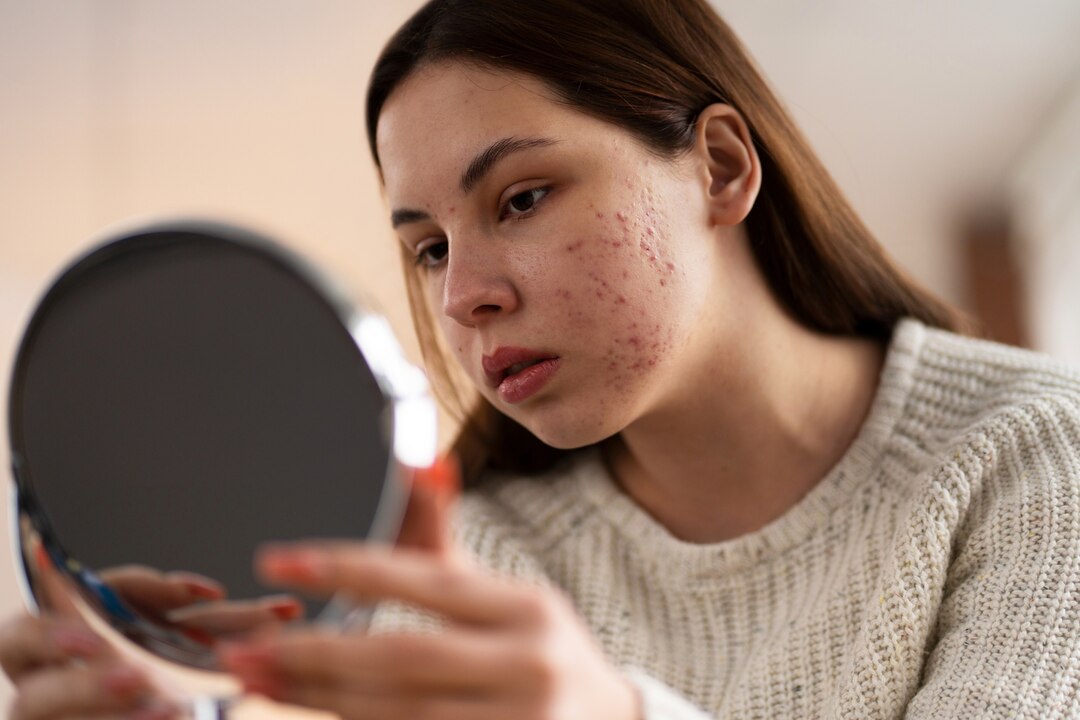Acne is a common skin condition that affects millions of people worldwide, with varying degrees of severity. While the exact causes of acne can be complex and multifactorial, one key player in the development of acne is sebum, the natural oil produced by the skin’s sebaceous glands. Understanding the relationship between sebum production and acne breakouts can provide valuable insights into effective acne management and treatment strategies.
What is Sebum?
Sebum is a natural oil produced by the sebaceous glands, which are located within the pores of the skin. Its primary function is to lubricate and waterproof the skin, keeping it soft, supple, and protected from environmental factors such as dryness and infection. Sebum is composed of various lipids, including triglycerides, fatty acids, wax esters, and cholesterol.
The Role of Sebum in Acne Formation
While sebum is essential for maintaining healthy skin, excessive sebum production can contribute to the development of acne. Here’s how:
- Clogged Pores: When the sebaceous glands produce too much sebum, it can mix with dead skin cells and other debris, forming a plug that clogs the pores. This creates an ideal environment for the proliferation of acne-causing bacteria, such as Propionibacterium acnes (P. acnes), leading to inflammation and the formation of acne lesions.
- Formation of Comedones: The accumulation of excess sebum and dead skin cells within the pores can lead to the formation of comedones, which are the primary characteristic of acne. Comedones can manifest as either open comedones (blackheads) or closed comedones (whiteheads), depending on whether the pore is open or closed at the surface of the skin.
- Inflammation: In addition to clogged pores and comedone formation, excessive sebum production can also contribute to inflammation within the skin. When P. acnes bacteria proliferate within clogged pores, they trigger an immune response, leading to redness, swelling, and the formation of inflammatory acne lesions, such as papules, pustules, nodules, and cysts.
Factors Influencing Sebum Production
Several factors can influence sebum production, including:
- Hormonal Changes: Hormonal fluctuations, particularly during puberty, menstruation, pregnancy, and menopause, can increase sebum production and predispose individuals to acne breakouts.
- Genetics: Genetic factors play a role in determining an individual’s susceptibility to acne and sebum production levels. People with a family history of acne may be more prone to developing the condition themselves.
- Dietary Factors: While the link between diet and acne is still debated, some studies suggest that certain dietary factors, such as high glycemic index foods and dairy products, may exacerbate acne by influencing hormone levels and sebum production.
- Stress: Psychological stress can stimulate the release of hormones like cortisol, which in turn can stimulate sebum production and contribute to acne flare-ups.
Managing Sebum Production and Acne
While it may not be possible to completely eliminate sebum production, especially since it plays a crucial role in maintaining skin health, there are several strategies that can help manage excess sebum production and reduce the risk of acne breakouts:
- Cleanse Regularly: Gentle cleansing with a mild, non-comedogenic cleanser can help remove excess sebum, dirt, and impurities from the skin’s surface without stripping away its natural oils.
- Use Topical Treatments: Over-the-counter and prescription topical treatments containing ingredients like benzoyl peroxide, salicylic acid, retinoids, and azelaic acid can help unclog pores, reduce inflammation, and control acne breakouts.
- Maintain a Healthy Lifestyle: Eating a balanced diet, staying hydrated, getting enough sleep, and managing stress levels can help support overall skin health and reduce the likelihood of acne flare-ups.
- Seek Professional Treatment: In severe cases of acne, dermatological interventions such as oral medications, topical antibiotics, hormonal therapy, chemical peels, and laser treatments may be recommended by a healthcare professional.
Sebum production plays a crucial role in the development of acne, but it’s important to remember that not all sebum is bad. While excess sebum production can contribute to acne breakouts, proper skincare habits, lifestyle modifications, and targeted treatments can help manage sebum production and reduce the severity and frequency of acne flare-ups. By understanding the relationship between sebum and acne, individuals can take proactive steps to achieve clearer, healthier skin. If acne persists or worsens despite home care efforts, seeking guidance from a dermatologist is recommended for personalized treatment options.








